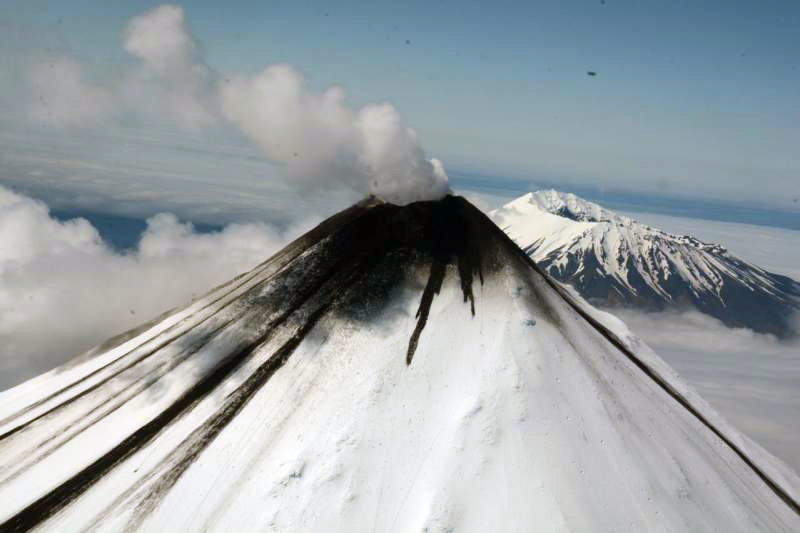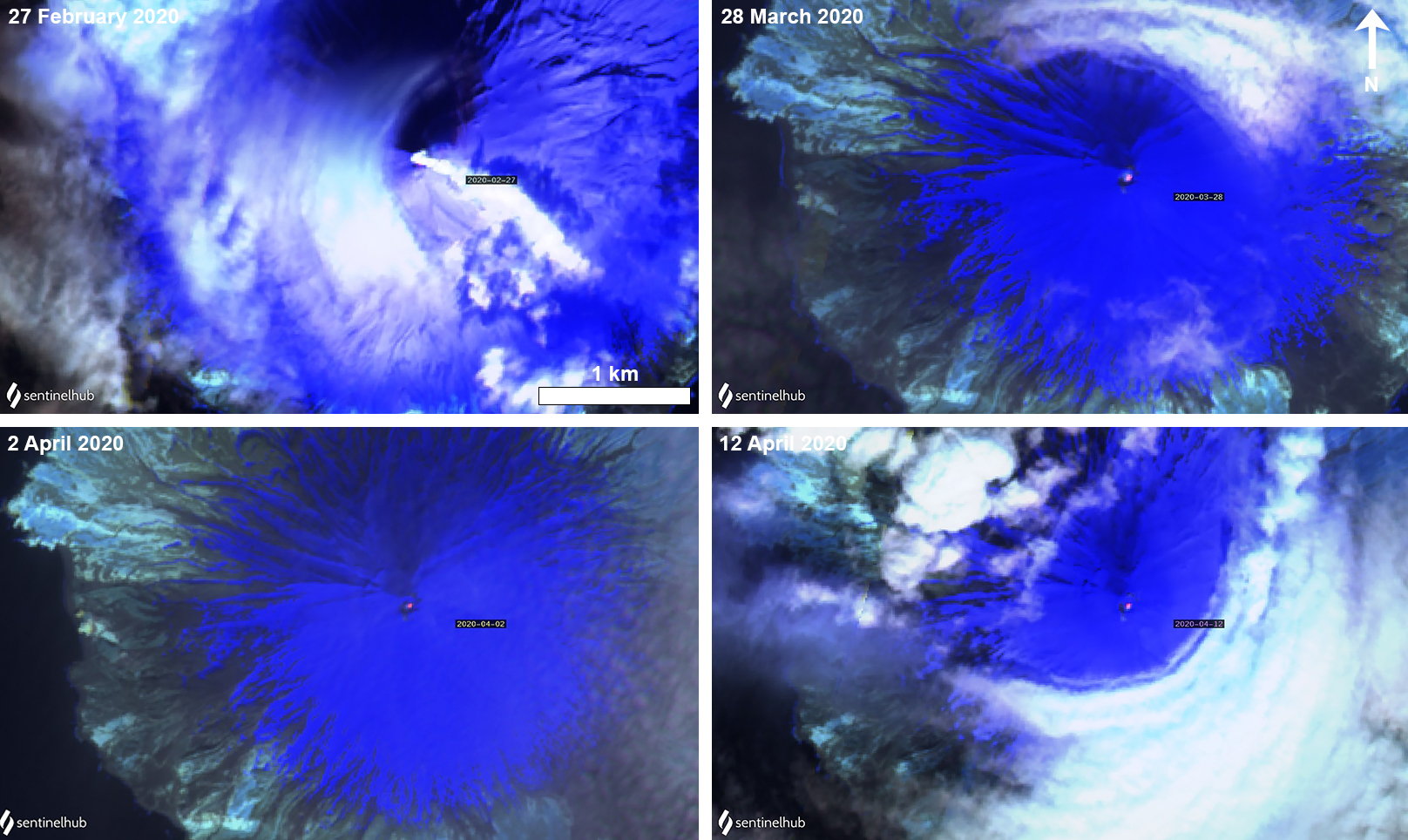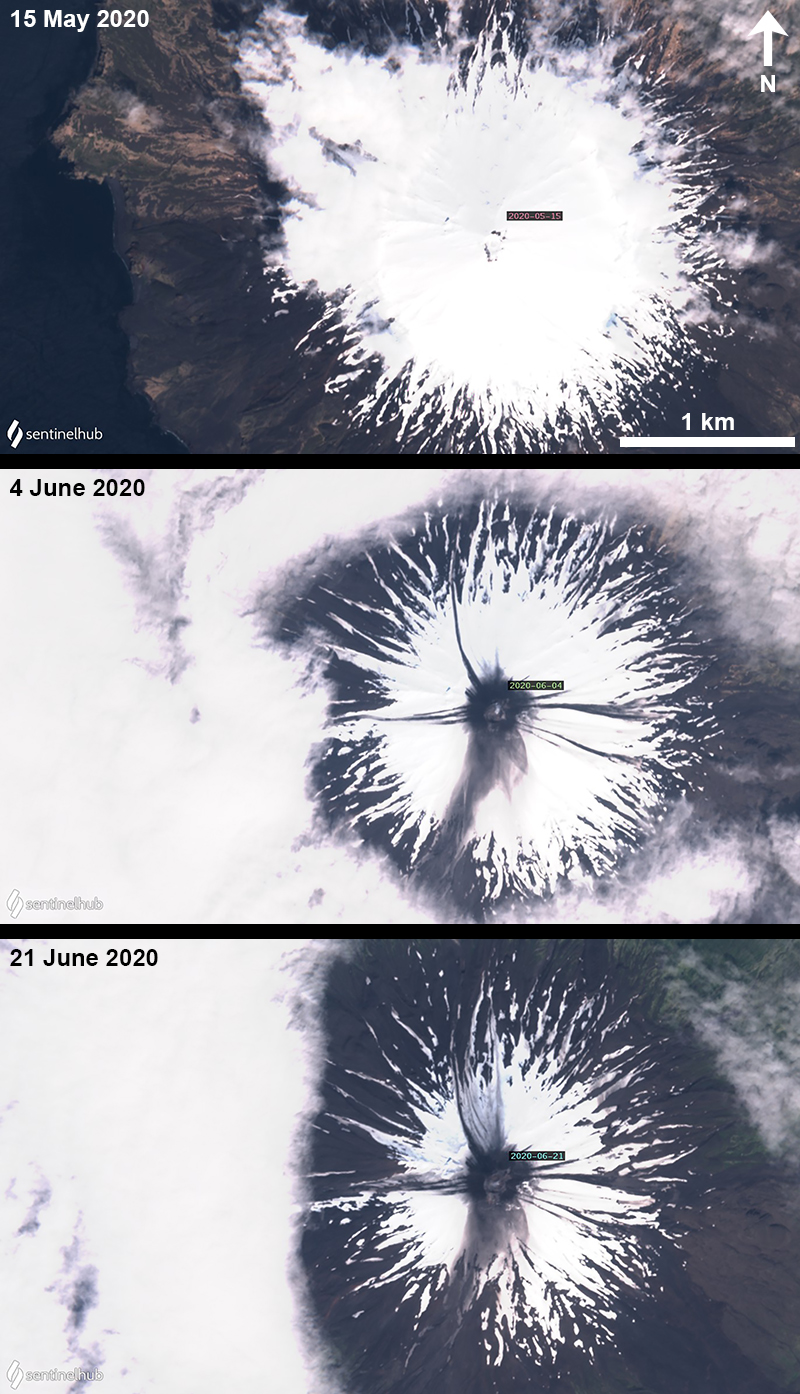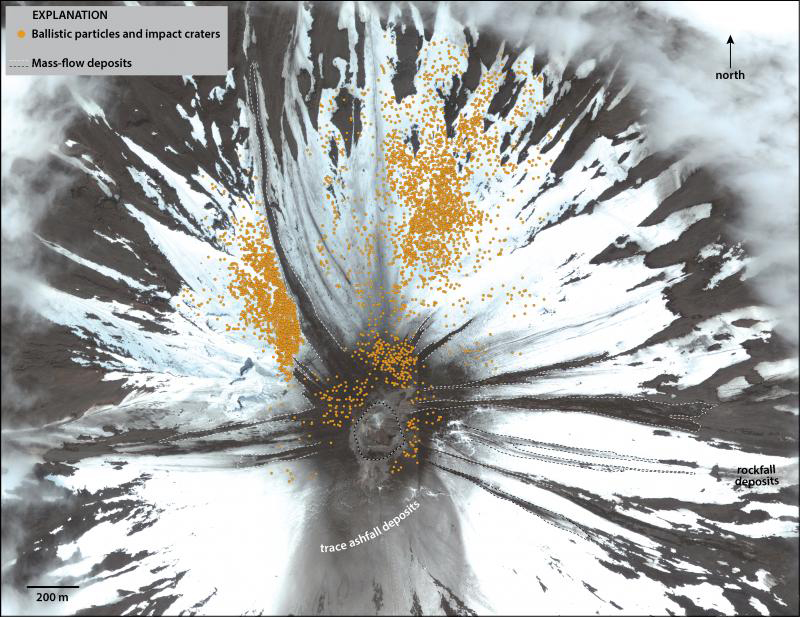Report on Cleveland (United States) — August 2020
Bulletin of the Global Volcanism Network, vol. 45, no. 8 (August 2020)
Managing Editor: Edward Venzke.
Edited by Kadie L. Bennis. Research and preparation by Paul Berger.
Cleveland (United States) Explosion on 1 June 2020 produced an ash plume and destroyed the January 2019 lava dome
Please cite this report as:
Global Volcanism Program, 2020. Report on Cleveland (United States) (Bennis, K.L., and Venzke, E., eds.). Bulletin of the Global Volcanism Network, 45:8. Smithsonian Institution. https://doi.org/10.5479/si.GVP.BGVN202008-311240
Cleveland
United States
52.825°N, 169.944°W; summit elev. 1730 m
All times are local (unless otherwise noted)
Cleveland is located in the western portion of Chuginadak Island, a remote island that is part of the east central Aleutians. Recent activity has been dominated by small ash explosions, intermittent lava dome growth, gas-and-steam emissions, and occasional thermal anomalies. The previous report described an ash explosion on 9 January 2019 that was followed by lava dome growth; by February the lava dome had begun to slowly subside (BGVN 45:03). This report covers activity during February-July 2020 using information primarily from the Alaska Volcano Observatory (AVO) and satellite data. According to AVO, local seismic, infrasound, and web camera data were unavailable due to an ongoing equipment failure.
Activity during February-May 2020 was relatively low and mainly consisted of weak gas-and-steam emissions and elevated surface temperatures near the summit, according to AVO. Sentinel-2 thermal satellite imagery highlights both gas-and-steam emissions and these higher surface temperatures near the summit crater (figure 34).
According to AVO, infrasound sensors recorded a small explosion on 1 June at 2232 local time, producing an ash plume that rose to an altitude of 6.7 km and drifted S, though clouds prevented the detection of the ash plume at the time in satellite imagery. The explosion destroyed the January 2019 lava dome and ejected a large amount of material from the summit crater. AVO raised the Volcano Alert Level (VAL) to Watch (second highest of four) and the Aviation Color Code (ACC) to Orange (second highest of four). No significant volcanic activity was noted after the 1 June explosion, although a gas-and-steam plume was visible on 3 June rising from the ash-covered summit (figure 35). As a result, on 17 June AVO lowered the VAL to Advisory and the ACC to Yellow.
 |
Figure 35. Photograph of Cleveland on 3 June 2020 (0000 local time), showing gas-and-steam emissions and ash covering the summit. Photo by Burke Mees, courtesy of AVO. |
A comparison of images from before the 1 June event and afterwards showed initial ash deposits on the S flank on 4 June and ash and debris flow deposits on all flanks on 21 June (figure 36). Analysis of satellite imagery from 22 June revealed that ejecta had traveled as far as 1.4 km from the summit crater (figure 37). By that time volcanic debris flows had carried material 2.9 km down the E flank and more than 2.7 km down the N flank. This event also caused a thermal anomaly detected in the MIROVA (Middle InfraRed Observation of Volcanic Activity) analysis of MODIS satellite data.
Geological Summary. The beautifully symmetrical Mount Cleveland stratovolcano is situated at the western end of the uninhabited Chuginadak Island. It lies SE across Carlisle Pass strait from Carlisle volcano and NE across Chuginadak Pass strait from Herbert volcano. Joined to the rest of Chuginadak Island by a low isthmus, Cleveland is the highest of the Islands of the Four Mountains group and is one of the most active of the Aleutian Islands. The native name, Chuginadak, refers to the Aleut goddess of fire, who was thought to reside on the volcano. Numerous large lava flows descend the steep-sided flanks. It is possible that some 18th-to-19th century eruptions attributed to Carlisle should be ascribed to Cleveland (Miller et al., 1998). In 1944 it produced the only known fatality from an Aleutian eruption. Recent eruptions have been characterized by short-lived explosive ash emissions, at times accompanied by lava fountaining and lava flows down the flanks.
Information Contacts: Alaska Volcano Observatory (AVO), a cooperative program of a) U.S. Geological Survey, 4200 University Drive, Anchorage, AK 99508-4667 USA (URL: https://avo.alaska.edu/), b) Geophysical Institute, University of Alaska, PO Box 757320, Fairbanks, AK 99775-7320, USA, and c) Alaska Division of Geological & Geophysical Surveys, 794 University Ave., Suite 200, Fairbanks, AK 99709, USA (URL: http://dggs.alaska.gov/); MIROVA (Middle InfraRed Observation of Volcanic Activity), a collaborative project between the Universities of Turin and Florence (Italy) supported by the Centre for Volcanic Risk of the Italian Civil Protection Department (URL: http://www.mirovaweb.it/); Sentinel Hub Playground (URL: https://www.sentinel-hub.com/explore/sentinel-playground).




